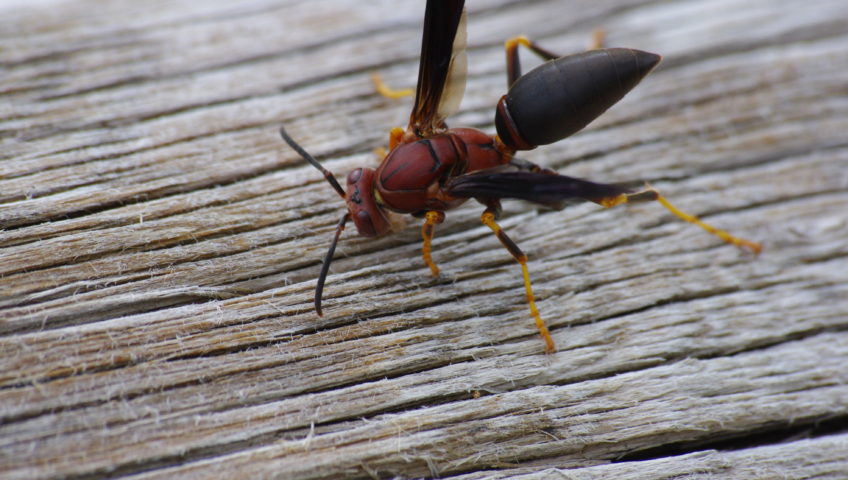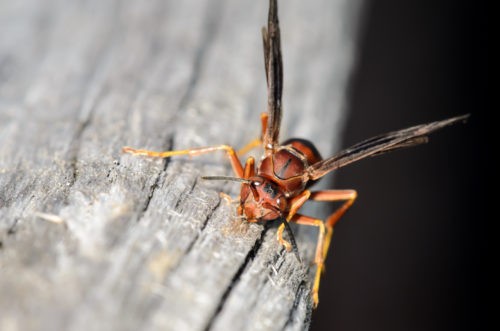
It truly is the most wonderful time of the year – even for us pest controllers, as many insects such as ants become dormant. But is this the case for all pests? One species that seems to increase in numbers are red wasps.
The key phrase is seems to, because by most accounts, red wasps (also known as paper wasps) do in fact decrease in numbers during this time frame. However, young, mated female wasps will look for shelter in cracks and crevices of buildings or homes in order to survive through the fall and winter months. This phenomenon is referred to as overwintering.
According to the Texas A&M AgriLife Extension, “…in late summer, queens stop laying eggs and the colony soon begins to decline. In the fall, mated female offspring of the queen seek overwintering sites.” Female wasps look for sanctuary and it can appear that their numbers have increased due to the visual barrage of wasps swarming around warmer sides of structures. But the wasps are simply testing the property, looking for small gaps and openings, in search of spaces large enough to squeeze their tiny insect bodies into, giving them the protection they need from the soon-to-arrive colder, wetter climates. Donald Lewis, from the Iowa State University Department of Entomology states, “… the wasps that survive the winter are the fertilized “foundress” queens that will start “from scratch” to build a new nest and colony…. [Subsequently] finding wasps indoors in the spring does not automatically mean there was a nest in the [structure].” The same goes for finding wasps within the structure in the fall or winter. Again, the overwintering female wasps are not looking to nest or create colonies – they are simply in search of temporary shelter.
While in the state of overwintering, wasps are sluggish and are not typically aggressive, though that is little comfort to those witnessing their antics. Pesticides may be used in any visible cracks and crevices and those areas that are within reach, but will do little to deter the pests from flying in and around the area. (If the pest does not land on the topical application, it will not be eliminated.) Unless there are specific gaps or penetrations that can be sealed or addressed through mechanical means, often the answer is simply wait until the first or second cold snap of the season to kick in. Once the cold weather settles in, those wasps that did not find shelter will die off and those that did will transition into a hibernation-like state until Spring when they will attempt to emerge from their make-shift shelter and fly away.






